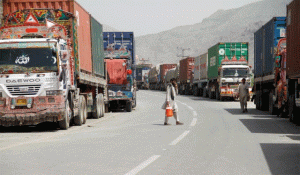The latest monthly figures from the International Cocoa Organisation (ICCO) have revealed further market instability in the sector, as commodity values continue to fluctuate amid concerns regarding over-supply in Ghana and Cote d’Ivoire
As the industry body recently revealed, core markets of Ivory Coast and Ghana are facing a challenging situation with excess supply a key factor in impacting on prices of the key ingredient for the chocolate market.
Ironically, Ghana’s record high production for the 2020/21 crop season of close to 1.1 million tonnes is contributing to the excess which is exercising downward pressure on global commodity market prices.
Trading conditions have remained complicated in the region, with the Ivorian government having reduced direct payments to farmers in April by 25%, while the ‘farmgate’ price paid to neighbouring Ghana was in fact maintained, as its crops performed consistently, with its mid-crop results showing a 12% increase, with reported assistance measures from the country’s government.
Consequently, reports from Bloomberg recently reported that Ghana had recorded its best harvest for a decade, at 965,493 metric tonnes in early June, with farmers seemingly on course to benefit from the freshly introduced Living Income Differential payments of $400 per tonne of cocoa that the Ivory Coast and Ghanaian governments heralded last autumn as a key solution to raising farmer payments to sustainable levels. COCOBOD itself now claims that production is heading for a long term record high.
Significantly, in May the ICCO had forecast global record cocoa production of 5.024 million tonnes for the 2020/21 season, marking the first time the 5 million mark has been broken – yet demand has reportedly been inconsistent in regions around the world during the past year amid the pandemic.
According to the organization, record productions are expected in Ivory Coast and and Ecuador as well, following conducive weather conditions in cocoa producing areas. Despite an expected increase in world grindings, a production surplus of 165,000 tonnes is currently anticipated for the crop year under review.
Furthermore, in terms of share of total world production, the ICCO noted that Africa is expected to remain by far the largest cocoa producing region, accounting for 77% of world cocoa output. The shares of the Americas and Asia and Oceania are likely to be 17% and 6% respectively.
COCOBOD is finalizing negotiations to take a US$2 billion loan from a syndicate of international banks, this year’s version of its annual receivables backed loan facility. Instructively in the past few years the size of this facility has rarely exceeded US$1.5 billion and last year it was only US$1.3 billion.
The terms of the latest version of this annual financing – the largest annual agricultural financing in sub Saharan Africa –will most likely be similar to those secured last year when COCOBOD raised US$1.3bn in syndicated loans to fund the purchase of cocoa during the 2020/21 season from a consortium of banks and financial institutions, at a yearly interest of one-month Libor plus 1.75 per cent, an annual commitment fee of 0.62 per cent and an upfront flat fee of 1.25 per cent.
The much higher amount being sought this year is the result of considerably higher production than in previous years. Indeed, COCOBOD is now expecting a record large cocoa harvest for the 2020/21 crop season. While favorable weather has played a part in putting Ghana on the cusp of its biggest ever harvest government interventions in the sector, including new ones introduced by the Board’s current management in 2017 has also boosted output for the crop season.
Chieftains at COCOBOD are confident that this year’s total production will at least match and most likely exceed the previous record production level of 1.025 million tons recorded a decade ago, in 2011.
Indeed, the Ghana Cocoa Board has revised its production target to between 1.05 and 1.1 million tons for the season that ends in September. That compares with the board’s initial goal of 900,000 tons as announced in August last year, just as the season was about to begin. This projection was a 5.8 percent increase over the projection for the 2019/20 season. In 2019/2020, Ghana is estimated to have produced about 800,000 tons of cocoa beans, a decrease from approximately 812,000 tons in 2018/2019. That disappointing return cast a pall over COCOBOD’s reform efforts encouraging its critics to doubt the production target for the current crop season.
But now the sector’s actual performance is blowing away all the criticism.
Even if it falls a little short of the revised production target, cocoa industry analysts point out that it will, in reality still amount to record high production. The 1.025 million tonnes officially recorded a decade ago was in part actually the result of smuggled cocoa into Ghana from neighbouring Cote ‘d’Ivoire – the only country in the world that produces more cocoa than Ghana itself – due to ongoing civil strife in that country at the time and a higher real price in Ghana. Although this was not proved it was a widely accepted fact, denied only by Ghana’s government at the time, which wanted to claim record local production to gain political mileage from being associated with such an impressive feat. It has been estimated – but never confirmed – that as much as 100,000 bags of cocoa were smuggled into Ghana during that crop season, which would have brought that year’s real total production to below one million tonnes.
The upward revision of the production target due to much higher than expected output in this crop season justifies actions taken by COCOBOD over the past four years, during which policy emphasis has shifted from maximizing the size of land under cocoa cultivation to productivity per acre, with state support focused primarily on the more productive farms. About a third of Ghana’s cocoa farms acreage has been suffering from aging trees and farmers among other production constraining issues.
Ghana’s cocoa board is implementing measures including hand pollination to improve productivity.
But pricing has proved key as well. Over the past few years, the global markets price for cocoa has been struggling and indeed government only resisted the temptation to lower the official producer price because such a move is seen as politically incorrect in Ghana. While government has been able to fall back on the cedi’s depreciation against the United States Dollar to maintain the local producer price despite falls in the international market price, the stability of the exchange rate in recent times has taken this option off the table.
However, the introduction of a US$400 a ton Living Income Differential (LID) by Ghana and Cote d’Ivoire in collaboration with each other has enabled government to raise the producer price significantly for the 2020/21 crop season, the first such major increase in over half a decade.
President Nana Akufo-Addo himself, on September 24, 2020 announced Ghana’s new producer price at GH₵10,560.00 per metric tonne or sixteen 64kg bags of the produce.
The price for the 2020/21 Main Crop is a 28-percent increase over the 2019/20 season farm gate price of GHc515 per bag and it included for the very first time the US$25 per bag Living Income Differential paid by cocoa buyers on cocoa from Ghana and Cote d’Ivoire.
But while this has given cocoa farmers a bigger incentive to produce, it is the policy interventions being introduced by COCOBOB that is facilitating actual increases. COCOBOD has begun rehabilitating diseased and over-aged cocoa farms across the country.
This forms part of strategic and long term measures in a bid to increase the country’s production of cocoa to an estimated 1.5 million tonnes in the next five years.
Currently, it is estimated that Ghana has more than 2.5 million hectres of cocoa areas of which about 1.45 million hectares are considered to be productive areas.
The Ghana Cocoa Board, armed with the first tranche of a US$600 million medium term loan secured from a consortium of international lenders led by the African Development Bank, has begun the first step towards a fundamental restructuring of how cocoa farmers in the country are supported in their activities through the provision of production inputs and agricultural extension services.
However the downward pressure on cocoa prices could put government in a bind as it is loath to reduce the farm gate prices it gives farmers for political as well as economic reasons.
The best way forward therefore will be to process more of its production locally, through a concerted state policy to support major expansion of processing capacity.







